Does anybody have a tested program to convert Illumina CASAVA 1.8 qual scores (Phred+33) to the previous version Illumina 1.5+ (Phred+64)?
Seqanswers Leaderboard Ad
Collapse
Announcement
Collapse
No announcement yet.
X
-
Why do you need a Phred+64 offset and/or the command line?What about something that I can run in the command lene?
Most programs should work with Phred+33 (e.g. append '-Q 33' to the fastx command line).
Also, Biopython can read files as one format and write them as another:
Here's a quick python conversion script, derived from an example on that page:
The hashbang isn't strictly needed, and the import is obvious, but it seemed too small with just a single line of code.Code:#!/usr/bin/python from Bio import SeqIO SeqIO.convert("input.fastq", "fastq-sanger", "output.fastq", "fastq-illumina")
Comment
-
Because tophat doesn't seem to handle well Phred+33 (CASAVA 1.8), but works with Phred+64 (CASAVA 1.5+).Originally posted by gringer View PostWhy do you need a Phred+64 offset and/or the command line?
Thanks a lot!Originally posted by gringer View PostMost programs should work with Phred+33 (e.g. append '-Q 33' to the fastx command line).
Also, Biopython can read files as one format and write them as another:
Here's a quick python conversion script, derived from an example on that page:
The hashbang isn't strictly needed, and the import is obvious, but it seemed too small with just a single line of code.Code:#!/usr/bin/python from Bio import SeqIO SeqIO.convert("input.fastq", "fastq-sanger", "output.fastq", "fastq-illumina")
Comment
-
This is interesting and doesn't match my experience with tophat on recent Illumina runs. Do you have any "--solexa1.3-quals" options on your command line? Removing that should stop bowtie from using Phred+64, and go back to the default Phred+33.Originally posted by lpn View PostBecause tophat doesn't seem to handle well Phred+33 (CASAVA 1.8), but works with Phred+64 (CASAVA 1.5+).
There's also the Bowtie "--phred33-quals" option, which I guess you could add to tophat's bowtie call to force this:
Code:nano $(which tophat)
Comment
-
As gringer said if you DO NOT specify a qual flag it will work fine. You are not the only person with HiSeq data which finally encodes the quality values in the standard sanger format for which nearly all programs expect by by default. The flag, for most today, is just for processing legacy datasets.
Comment
-
That works, but subsequent analysis produces strange results.Originally posted by gringer View PostThis is interesting and doesn't match my experience with tophat on recent Illumina runs. Do you have any "--solexa1.3-quals" options on your command line? Removing that should stop bowtie from using Phred+64, and go back to the default Phred+33.
There's also the Bowtie "--phred33-quals" option, which I guess you could add to tophat's bowtie call to force this:
Code:nano $(which tophat)
Last edited by lpn; 03-03-2012, 07:53 AM.
Comment
-
What works? I suggested two options (not counting the python code). One was to remove --solexa1.3-quals from the tophat command line, and the other was to modify the bowtie parameters. I was deliberately vague about the second option because you need to know what you're doing before you do it (e.g. change the bowtie options everywhere bowtie is called, and change the tophat code that expects Phred+64 output).Originally posted by lpn View PostThat works, but subsequent analysis produces strange results.Last edited by gringer; 03-03-2012, 11:57 AM.
Comment
Latest Articles
Collapse
-
by seqadmin
Proteins are often described as the workhorses of the cell, and identifying their sequences is key to understanding their role in biological processes and disease. Currently, the most common technique used to determine protein sequences is mass spectrometry. While still a valuable tool, mass spectrometry faces several limitations and requires a highly experienced scientist familiar with the equipment to operate it. Additionally, other proteomic methods, like affinity assays, are constrained...-
Channel: Articles
04-04-2024, 04:25 PM -
-
by seqadmin
Despite advancements in sequencing platforms and related sample preparation technologies, certain sample types continue to present significant challenges that can compromise sequencing results. Pedro Echave, Senior Manager of the Global Business Segment at Revvity, explained that the success of a sequencing experiment ultimately depends on the amount and integrity of the nucleic acid template (RNA or DNA) obtained from a sample. “The better the quality of the nucleic acid isolated...-
Channel: Articles
03-22-2024, 06:39 AM -
ad_right_rmr
Collapse
News
Collapse
| Topics | Statistics | Last Post | ||
|---|---|---|---|---|
|
Started by seqadmin, 04-11-2024, 12:08 PM
|
0 responses
30 views
0 likes
|
Last Post
by seqadmin
04-11-2024, 12:08 PM
|
||
|
Started by seqadmin, 04-10-2024, 10:19 PM
|
0 responses
32 views
0 likes
|
Last Post
by seqadmin
04-10-2024, 10:19 PM
|
||
|
Started by seqadmin, 04-10-2024, 09:21 AM
|
0 responses
28 views
0 likes
|
Last Post
by seqadmin
04-10-2024, 09:21 AM
|
||
|
Started by seqadmin, 04-04-2024, 09:00 AM
|
0 responses
53 views
0 likes
|
Last Post
by seqadmin
04-04-2024, 09:00 AM
|


Comment